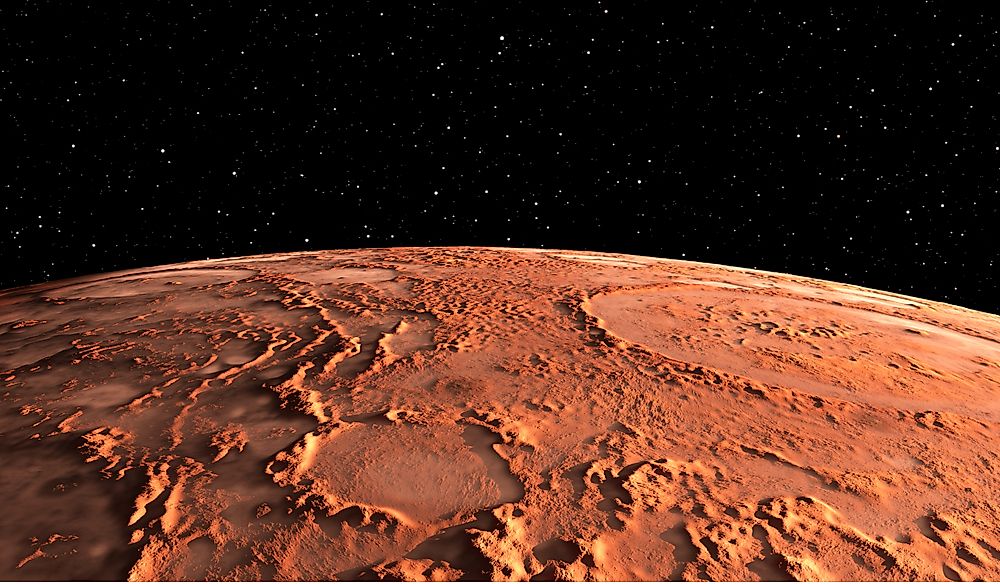The planet mars is red thanks to the iron oxide contents of its surface material or regolith it s the same compound that gives rust and blood their unique color

The Red Planet: Unveiling the Mystery behind Mars’ Crimson Hue

Mars, often referred to as the “Red Planet,” has captivated scientists and space enthusiasts for centuries. Its distinct crimson hue stands out against the darkness of space, making it an intriguing subject of exploration and research. But have you ever wondered why Mars is red? In this article, we take a closer look at the fascinating science behind the planet’s vibrant color and the role iron oxide plays in its unique appearance.
The Iron Oxide Connection

The planet Mars owes its rusty-red allure to the abundance of iron oxide (also known as hematite) present in its surface material, or regolith. Iron oxide, a compound made of iron and oxygen, gives rust and blood their iconic hues here on Earth. Similarly, it is the primary factor responsible for Mars’ striking color palette.
The Geological Composition
Mars’ dusty and rocky regolith is rich in iron oxide, giving the planet its distinctive reddish appearance. The iron oxide particles scatter and reflect sunlight differently compared to other substances, resulting in the crimson glow that is visible from Earth. As sunlight passes through Mars’ atmosphere and hits the surface, the iron oxide-laden dust particles absorb most of the blue and green wavelengths, reflecting back the longer red wavelengths that dominate our perception.
Atmospheric Influence
Aside from the iron oxide content, Mars’ atmosphere also plays a significant role in enhancing its redness. The thin atmosphere, primarily composed of carbon dioxide, permits more sunlight to reach the surface compared to Earth. This unfiltered sunlight further intensifies the reddish tone of the planet, making it even more visually distinct.
Multiple Forms of Iron Oxide
While iron oxide is the primary contributor to Mars’ reddish appearance, it exists in various forms on the planet. The most prevalent form is ferric oxide, commonly known as rust. The presence of rust-colored iron oxide pigments gives Mars its overall reddish-orange glow. Additionally, other iron oxides, such as magnetite and hematite, are also found on the planet, adding further complexity to its coloration.
A Visual Spectacle
Mars’ captivating red hue has mesmerized astronomers for centuries. Early Greek astronomers observed and named the planet after the Roman god of war due to its fiery and striking appearance. But it wasn’t until modern telescopes and space probes that scientists began unraveling the mysteries behind Mars’ unique color and its geological composition.
Today, with advanced space missions dedicated to exploring the Red Planet, including NASA’s Mars rovers and the upcoming Artemis missions, we continue to deepen our understanding of Mars’ fascinating features, including its vibrant redness.
In conclusion, the distinctly red color of Mars is a result of the abundance of iron oxide, or rust, present in its surface material. The iron oxide particles interact with sunlight, scattering and reflecting back the longer red wavelengths, creating the iconic crimson hue. As we delve further into the exploration of Mars, our knowledge of its rich geological composition and captivating coloration continues to expand, bringing us closer to unlocking the secrets of our neighboring Red Planet.
Related Posts
Quick Links
Legal Stuff

